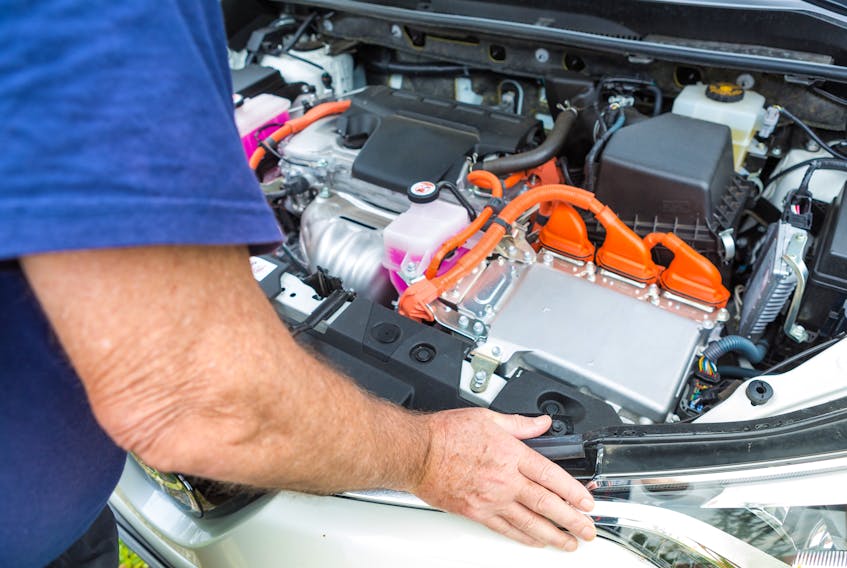Research into improving battery technology has been a high priority for manufacturers to improve the range of hybrid and electric vehicles. It is paying off. In just a few years, batteries have improved in providing more power from a smaller package and even recharging faster. The battery used in the Hybrid Ford Escape, Ford’s second best selling vehicle behind the F-series truck, is a great example.
I remember driving the first Ford Escape Hybrid when the vehicle was introduced in in 2004. Until that time, the Toyota Prius was the only mass-produced hybrid on the market and very few had experience driving any hybrid vehicle. My first impressions of the Escape Hybrid were mixed, with decent acceleration but fairly loud gear whine from the electric motors of the CVT transmission. The biggest problem with the first generation Escape Hybrid was the cargo space taken up by the hybrid battery. The battery was in a large metal case that measured 42 x 32 x 5.5 inches and weighed 90 kilograms.
The battery pack consisted of 250 individual nickel metal hydride cells similar in shape to a D cell flashlight battery. Each battery produces about 1.3 volts and the cells are combined together in groups of five to form a module. With 50 modules in the battery pack, it can produce a total of 330 volts.
The battery case not only contains the battery modules but also has air channels for cooling the cells, temperature sensors, fans, switching modules and battery disconnect module. It is a complex unit and requires air from the passenger compartment to enable battery cooling.
New generations
The second-generation Escape was built from 2008 to 2012. Technology had improved and the Nickel Metal Hydride (NiMH) battery was more powerful but smaller in size. Weighing only 50 kilograms, the battery pack measures 39.5 x 20 x 11 inches. It still uses air passages to cool the cells but takes up less cargo space in this SUV.
The third-generation Escape was introduced as a 2013 model and continued till 2019. Again the battery was improved and now weighed only 45 kilograms and measures 43 x 14.5 x16 inches. However it is still air cooled and intrudes somewhat into the cargo area. That changes with the 2020 Escape.
The 2020 Escape is the fourth-generation and now the hybrid powertrain is standard equipment on the Titanium models. An optional non-hybrid gas engine is offered, but the hybrid is now mainstream and the new battery design has many changes. This battery uses lithium ion cells producing 3.6 volts per cell. Not all Lithium Ion batteries are formulated the same. They can have several different chemical compositions and no one formula is perfect but the one used in the Escape combines durability, performance, and safety. Weighing only 27 kilograms, less than 1/3 the weight of the original hybrid battery, it fits in a small 24.5 x 14 x 5 inch case.
The battery case is now water cooled, with a cooling plate in the bottom of the case that the cells sit on. The battery is compact because the cells can be mounted tight together, not needing space for air to circulate. Coolant for the battery comes from a cooling system separate from the engine cooling system. Because the battery case is sealed, it can be placed beneath the vehicle and the Hybrid-powered Escape has as much interior space as non-hybrid versions.
In 15 years, the battery in the Escape hybrid has gone through four major changes and the research team behind their designs have tested literally thousands of other designs. With all manufacturers introducing new hybrids, plug-in hybrids and electric vehicles, the efforts to produce even better battery technology are astounding. Perhaps the next hybrid battery design will be smaller than the radio in your current vehicle.
RELATED:









